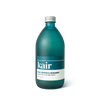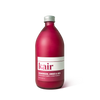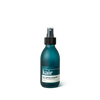How to use a washing machine
If you want to extend the life of your clothes and your washing machine - and also save yourself a trip to the launderette - it’s important to know how to use a washing machine for best performance. Loading your machine correctly can make a huge difference to how clean and fresh your items will be when they come out of the wash. Plus, it can help you cut down on waste.
So, whether you’re wondering where to put your liquid detergent or fabric conditioner, which settings to use or even how to stop your machine mid-spin, we’ve got the answers.
The 5 basic steps
There are five basic steps when using a washing machine: turn the machine on and put your laundry in; add the right detergent (and some fabric conditioner, if you’re using it); select the right cycle and temperature; close the door and press start; and unload at once. It’s more or less as simple as that, but read on if you want the finer details…
Before you load up
Before you load up your machine, we recommend taking a few preliminary measures. Firstly, use mesh laundry bags, and separate your laundry into categories (darks, lights, colours, delicates). Separating by colour is especially important, as it reduces the risk of strong- or dark-coloured items ‘bleeding’ onto lighter-coloured ones. While zips should be zipped up to prevent the teeth from snagging the seam and avoid breaking the zip itself, buttons shouldn’t be buttoned as this can put a strain on them as well as on the fabric. Turn your patterned garments inside out to reduce fading and preserve the brightness of the print. Finally, always check your pockets before putting your items in the washing machine: it’s not just that a soggy half-dissolved tissue is a rather unwelcome thing to find in the pockets of your freshly laundered jeans, but metal items like keys and coins can damage both the outer and inner drum of the appliance and the fibres of your garments.
Where to put what
There are three compartments in a washing machine detergent drawer, which should be match the numbers we’ve listed below (if in doubt check your washing machine’s manual). Once you know what to put what where, the rest should be very straightforward.
1) Pre-wash: this drawer is only intended for heavily soiled items, so you’ll probably not use it very often. Simply add the same detergent as in compartment two.
2) Detergent: this is almost always the largest of the three, so should be easy to spot. For a standard 3-4kg load, pour the detergent directly into the machine drawer. When using Kair in soft water areas, or for lightly soiled garments, use 25ml; in hard water areas, or for heavily soiled garments, use 35ml. If you prefer you can also pour into the main drum with a dosing ball.
3) Fabric conditioner: this one’s often a different shape or colour to the other compartments, or may have a flower symbol on it. As with the detergent, stick to our recommended dose of a teaspoon (15ml) and never fill higher than the MAX line. Be sure to keep this compartment in particular clean, otherwise your machine might not take the conditioner. And no one wants a gloopy build-up of conditioner remnants!
Front loading washing machines
These have a lot more knobs and buttons than top-loaders, which may seem daunting at first, but they’re actually very simple when it comes to running a wash.
1) After pressing your machine’s ON button, place your laundry into the drum. Be sure to leave enough space for your clothes to move around in the wash. There’s a simple trick for this: if your palm can fit between the clothes and the machine, then you’ve loaded properly, otherwise you will need to take some items out before proceeding.
2) Add the right detergent (and conditioner) to the appropriate compartment (as above).
3) Choose the right temperature and spin cycle. Always follow the care instructions on the clothing label, but as a general rule, if there are multiple temperatures, choose the lowest one. When choosing the right spin cycle, again check the label. Usually delicates need a slower cycle, while cotton and other durable fabrics can tolerate faster cycles.
4) Close the door of the drum, and press START/PAUSE. If you need to open your machine’s door while mid-cycle, press the button again, and wait a few minutes for the machine to safely drain away the water in the drum before it unlocks the door. From there, you can open the door and add or remove items or make changes to the cycle. Close the door again, press START/PAUSE once more, and resume the cycle.
5) To maximise freshness and reduce creases, unload immediately after washing.
Top loading washing machines
Top-loaders are easier to load than front-loaders, as there’s no awkward bending down to reach the door. There are a few other subtle yet important differences though...
1) Turn on your machine, then add your detergent (and conditioner). If you’re pouring your detergent directly into the drum using a dosing ball, be sure to place it first, when the drum’s still empty, close to the water source. That way it’ll get absorbed right at the start.
2) Now add your laundry, and again, avoid overloading. As a general rule, add clothes until the machine’s about two thirds full and only loosely packed - never fill it to the top, as tempting as it may be to pack in as much as you can! If you add too many clothes, the water may not reach all of them. That can leave residue, and lead to an imperfect wash.
The next three steps are the same as those above: choose the right temperature and spin cycle; close the door and press START/PAUSE; and unload as soon as possible.
Between washes
As we explain in Laundry Myths and Truths, a machine that cleans clothes doesn’t clean itself. So to keep your machine cleaning your clothes, and prevent the build-up of bacteria and mould, you need to clean your machine - and as regularly as you can. Simply run a hot service wash (60º C or higher) once a month at a high temperature, with no clothes in the machine, and in place of your usual detergent add a large cup of white vinegar or lemon juice together with some baking soda to disinfect the tub. We also recommend leaving the drum door open between washes, to let in air and again reduce mould.
Cover image by Sebastian Herrmann



















